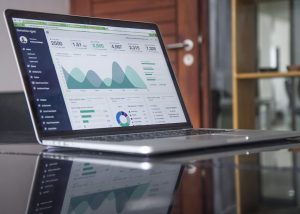Fundamental analysis is one of the most important tools that forex traders can use to make informed decisions about their investments. It involves analyzing economic, financial, and geopolitical factors that may impact the value of currencies in the forex market. In this article, we will explain how to do fundamental analysis forex like a pro by outlining the key steps involved in the process.
1. Understand the Basic Concepts of Fundamental Analysis
Before you start analyzing the forex market, it’s essential to understand the basic concepts of fundamental analysis. This includes understanding the different economic indicators that can impact currency values, such as inflation, interest rates, and gross domestic product (GDP). You should also have a good understanding of the global financial system and how it works, including the role of central banks and major economic players.
2. Keep Up-to-Date with Economic News and Events
To conduct successful fundamental analysis, you need to stay up-to-date with the latest economic news and events. This includes monitoring news releases, economic reports, and speeches from central bank officials. You should also pay attention to geopolitical events that may impact the forex market, such as political unrest, natural disasters, and conflicts.
3. Analyze Economic Indicators
Once you have a good understanding of economic indicators, you can start analyzing them to gain insights into currency values. For example, you might look at inflation rates to determine whether a currency is likely to appreciate or depreciate in the future. Similarly, you might analyze interest rates to determine whether a central bank is likely to raise or lower rates, which can impact currency values.
4. Monitor Central Bank Policies
Central banks play a significant role in the forex market, as they are responsible for setting interest rates and implementing monetary policies that can impact currency values. As such, it’s important to monitor central bank policies and speeches to gain insights into their future actions. For example, if a central bank hints at raising interest rates, this can lead to an appreciation in the currency.
5. Analyze Market Sentiment
Market sentiment refers to the overall mood or attitude of traders in the market. It can be influenced by a range of factors, such as economic news, geopolitical events, and even social media trends. By analyzing market sentiment, you can gain insights into how traders are feeling about a particular currency, which can help you make informed decisions about your investments.
6. Use Multiple Sources of Information
To conduct successful fundamental analysis, it’s important to use multiple sources of information. This includes economic reports, news releases, and speeches from central bank officials. However, you should also consider using alternative sources of information, such as social media trends, market sentiment indicators, and technical analysis tools. By using multiple sources of information, you can gain a more complete picture of the forex market and make better-informed decisions about your investments.
Conclusion
Fundamental analysis is a key tool that forex traders can use to make informed decisions about their investments. By understanding the basic concepts of fundamental analysis, keeping up-to-date with economic news and events, analyzing economic indicators, monitoring central bank policies, analyzing market sentiment, and using multiple sources of information, you can conduct successful fundamental analysis forex like a pro. With these tools at your disposal, you can make better-informed decisions about your investments and increase your chances of success in the forex market.






